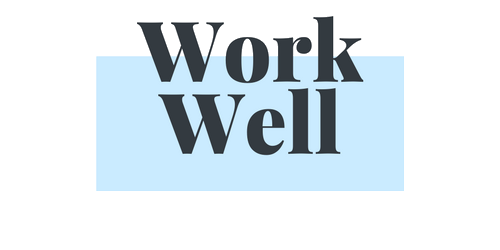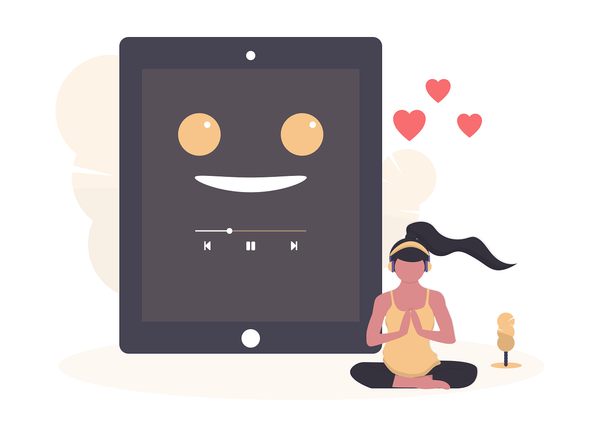Tom Freeman works at Headspace, the world's most popular meditation app.
Follow Tom on LinkedIn. Sign up to get new Work Well articles.
What does culture mean at Headspace?
Conversations around ‘culture’ in the workplace often reflect whether a company offers perks like ping pong tables or kombucha on tap. While this stuff can be fun and tasty, I find it useful to think of culture as the psychology of an organization. What are the real undercurrents around how things are done on a day to day basis?
Culture is a shared experience which ultimately everyone has a part in shaping and building. Luckily, Headspace co-founders Andy Puddicombe and Rich Pierson have always taken culture seriously and it remains a priority as we scale.
Central aspects of our culture include developing a place for collaboration and curiosity, fostering an environment in which our team can meditate at work, and ensuring clarity of our vision to improve the health and happiness of the world.
Can you tell me a little about your role as a Culture Manager at Headspace?
I took on the role as Culture Manager in January 2015 when Headspace was much smaller (and making tea for the entire team was much easier). Prior to this position, I worked for three years at Headspace which exposed me to the brand, HR, and managing people in a number of roles - all relevant experience for this role.
Culture changes and so my role involves evaluating and guiding our company values as we scale. Without an official playbook for culture at work, we continually try to learn and evolve for the betterment of the team and company. I’m excited by the nature of my work changing from month to month, depending on the dynamic and needs of the team and company at large. My passion is to help make these 8 (occasionally more) hours a day we spend at work meaningful ones.
I work with the team daily to help foster an environment in which our team can meditate at work. This comes down to twice-daily meditation sessions and hosting other events. I also work on internal communications to help shape how we share stories from our users, communicate change within the organization, and announce upcoming events.
Every Monday, I oversee the orientation process for new hires. This involves getting new starters up-to-speed on office life and culture, sharing the history, values, daily flow, and goals of Headspace. This is a team effort to ensure our new hires are primed for a happy, healthy, and productive time at Headspace.
I also manage how we receive feedback from the team, which fosters learning and growth for the company culture. We run a quarterly ‘Happiness at Work’ survey which allows us to gauge the well-being, motivation, and engagement of our employees and teams. Once the survey closes, I sit down with our managers and leadership team to share the data and discuss how we can best move forward. We also run regular surveys after events and trainings, so that we can gather feedback, see what’s useful for the team, and work to improve.
We use these results to inform what our team needs; additional training, a tweak in how we communicate, or what well-being initiatives we offer. I help to manage our learning and development program and facilitate in-house training to identify and use strengths at work, set and manage goals, and effectively give and receive feedback. We use a popular goal setting tool here called OKRs (Objectives and Key Results). Each individual employee and larger team set OKRs each quarter, which ladder up to greater company goals. This tool helps us to align as a company and increase awareness throughout our organization.
Finally, we think it’s important to bring playfulness into our culture so there’s always a party being planned with the team. We’re fans of ‘formal Friday’ (when we dress up formally on a Friday…) and the lip-sync battle we hold each year at our holiday party (which gets quite competitive). We also encourage peer-to-peer recognition and have an online tool which allows our team to virtually and publicly ‘high five’ (and give actual bonuses) to each other.
Mindfulness is at the core of Headspace as a product. How do you see that reflected in Headspace’s culture?
There are a number of things we do to maintain and grow a culture in which our team can understand our product and develop a meditation practice at work. We believe the ripple effects of the practice can be widespread — this includes how our team communicates and collaborates, applies creativity to projects, and how they sleep at night. We’ve always encouraged meditation practice at work and it’s a central part of our culture and community.
We offer opportunities for our team to do one of Headspace’s 10-minute guided meditations in a group setting twice a day, every day at 10am and 3pm. This allows the team to pause from work, gather as a group, and practice what we preach. If employees prefer to meditate alone, they can hop into one of our meditation pods or our ‘silent room’. We also encourage employees to start meetings with a short 3-minute meditation. We think it’s important to encourage our team to take good breaks throughout the day. We have two ‘no-meeting’ blocks per day where our team can either meditate as a team, congregate in the kitchen for a cup of tea, or go outside for a stretch.
We also hold what we call ‘meditation meetups’ with our co-founder Andy Puddicombe. As a former Tibetan Buddhist monk for 10 years, Andy brings authenticity to what we do at Headspace. These meetups allow the team to discuss topics around meditation and mindfulness with Andy, and he offers a group meditation too. We’ve also recently started running company retreats when we take our team off-site for the day and apply a focus on meditation and practice.
Team well-being is also central to how we design and engineer our physical work environments as well as our team perks and benefits, so we offer generous time off for vacation, if you’re sick, or if you’re a new parent.
What are some of the biggest challenges you face?
When Headspace was small and we were all crammed into one room, aspects like communication and knowing what everyone was working on was more straightforward. As we scale, keeping this communication smooth and open is something which gets more difficult but is something we really want to ensure. We hold a weekly all-hands meeting when the entire company gets together to receive company-wide updates, and employees can also ask questions to our leadership team, which helps with transparency.
Also when we were small, the connection between the team and our users felt closer since we all had to pull many ropes in order to get the mission off the ground. As we scale, keeping that connection with our users, as well as our team having a deep understanding of our product and the practice of meditation is something we can continue to develop.
As there’s no playbook when it comes to company culture, learning and making mistakes (and recognizing those mistakes) is something we’re getting better at. Personally, meditation has helped me step back from feedback and assess what’s most important to focus on right now. This helps me view my challenges (and mistakes) as growth opportunities.
How do you measure the results of your work and plan for the future?
I love the idea of building a culture around feedback and continuous learning. As I mentioned earlier, for the past few years now we’ve run quarterly ‘Happiness at Work’ surveys. As we view culture as the way things are done, it gives us a regular snapshot into what’s going on, how that aligns with our company values, and ultimately the culture we’re continually working to evolve. I also sit down with each member of our leadership team to share and receive feedback.
As also mentioned earlier, we’ll pulse survey the team on how they’re finding various initiatives we’re running. This may be our new hire orientation, training workshops, or company events we hold. This allows us to see if our team is learning about our culture and the way things are done. It’s all part of the continuous learning process.
Culturally, I feel the ‘planning for the future’ piece has several parts. A crucial foundation involves how and who you hire, and how this ties with the values and vision of the company. It then comes down to ensuring employees can learn about the culture, how they shape it, and how the organization can support and encourage success. When these work together, we can develop a community in which we can reach our vision to improve the health and happiness of the world.
Want more articles just like this one? Sign up here to get them delivered right to you.






0 comments